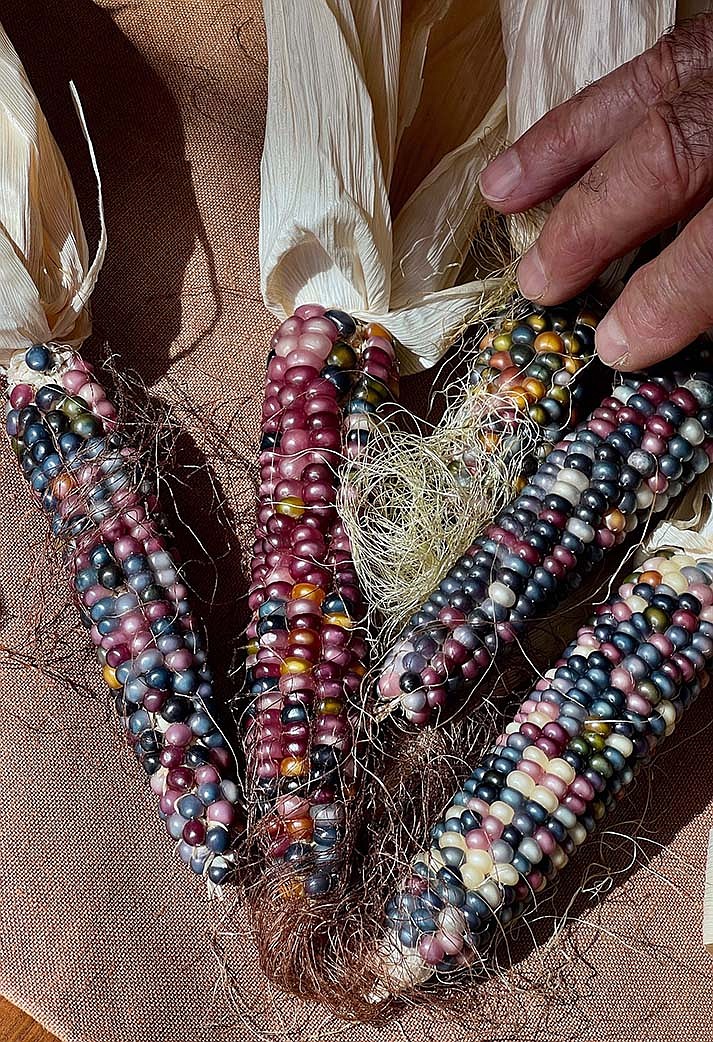GARDENS FOR HUMANITY: Saving Seeds – Preserving beauty, biodiversity, hardiness, and food traditions
I rarely plant corn, but this year I wanted to plant some glass gem popping corn. I planted individual grains, each of a different color and then each cornstalk made cobs with a rainbow of colors! Each cob is different. There is something otherworldly about plant genetics - it can’t be explained, just admired; for me this is magic!
The fact that the plants that we grow produce seed that will continue year after year is a gift they have given us for millennia, insuring our survival.
Gardening is how we participate in this age-old sowing and reaping activity, but for many gardeners it stops at the harvest of food. In all the uncertainties of making a garden, the most dependable plants I grow are the ones I did not plant. They are volunteers. I have volunteer tomatoes that have somewhat naturalized in my garden for the last ten years. They are well adapted and choose to live in my garden, providing us with a welcome treat year after year.
While volunteer plants are mostly unintentional additions to the garden, we can intentionally save seeds to develop plants that thrive in the conditions of our garden. By saving seeds we can create our own “heirloom” varieties, selecting the ones that do best and that we like most.
Heirloom seeds are seeds that have been handed down from one generation to the next. They are seeds that are the storehouse of family traditions and stories of family struggles and celebrations. They often have colorful names like “Mortgage Lifter,” “Nebraska Wedding,” and “Mamie Brown’s,” all referring to tomatoes. Many seeds traveled to the U.S. in the baggage of immigrants. These seeds produced foods that connected them to the homes they had abandoned and to their familiar dishes.
Seeds were also the storehouse of our agricultural biodiversity and heritage. I say, “were,” because since the 1900s, some seventy-five percent of plant genetic diversity has been lost. Farmers worldwide no longer saved their multiple local varieties and uniquely adapted seeds. Instead, they opted for genetically uniform commercialized varieties, resulting in a less diverse modern diet.
For the home gardener, there are some vegetable seeds that are easy to save or let naturalize, and almost all flowers are programmed to reproduce without human intervention. These are usually the self-pollinating ones that are from plants that freely pollinate by natural means. Seeds from self-pollinated veggies (tomatoes, beans, lettuce) have blossoms with both male and female parts, so are true to type year after year and are easiest for seed saving.
Saving seeds from one’s garden is a fun way to perpetuate beloved vegetables and flowers and adapt them to your particular garden environment. Home gardeners and small farmers are a critical repository and haven for healthy and traditional crops. It is easy to save seeds from your favorite non-hybrid tomato, bean, or pea and plant it year after year.
Gardens for Humanity started the Verde Valley Seed Library that is open monthly at the
Cottonwood Library. The Seed Library works just like a regular library: check out the seeds, grow them, save some seeds to return to share with others. The seed packets from seeds grown out by local gardeners identify the seed by name, year grown out, and location grown. Browsing the seed collection is like looking at a map of the Verde Valley, since Seed Library users come from all our communities. Learn more about the Seed Library and the how and why of saving seeds by visiting our website gardensforhumanity.org.
Richard Sidy is president of Gardens for Humanity, a founding member of the Sustainability Alliance and a member of the Verde Valley Food Policy Council. To reach him, email president@ gardensforhumanity.org.
SUBMIT FEEDBACK
Click Below to:





